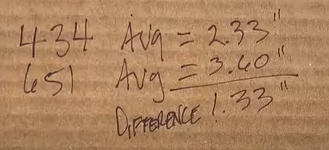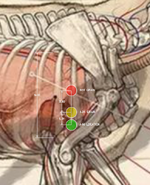In one sentence, shoot the heaviest arrow you can above 260ish FPS if you shoot 27+ inches and/or 60+ lbs, and make sure it tunes well.
It's more nuanced than that though. Speed is accuracy in hunting scenarios, but too much can make broadhead tuning difficult, and you still need to balance momentum. Kinetic energy and FOC are so far down on the priority list I wouldn't even look at them. A 22LR has more KE than most people shoot in their hunting bows. I would try and do your own research to determine what matters to you, but this is how I decide.
I have a 6 step process for determining my arrow builds. If an arrow meets these criteria then I don't worry about the insignificant stuff like gaining an extra half a percent of FOC
It's more nuanced than that though. Speed is accuracy in hunting scenarios, but too much can make broadhead tuning difficult, and you still need to balance momentum. Kinetic energy and FOC are so far down on the priority list I wouldn't even look at them. A 22LR has more KE than most people shoot in their hunting bows. I would try and do your own research to determine what matters to you, but this is how I decide.
I have a 6 step process for determining my arrow builds. If an arrow meets these criteria then I don't worry about the insignificant stuff like gaining an extra half a percent of FOC
- What will this arrow be used for
- How does this use effect the needs of my arrow
- Based on those needs, what do I want from this arrow in regards to velocity and flight characteristics
- What grain and diameter arrow will get me those speeds and characteristics
- What components will I be using
- What arrow will provide these while tuning good in my system.
- This arrow will be used for hunting varied species of big game in varied terrains with varied broadhead choices
- This use means I need a very flexible build in regard to trajectory, wind drift, and broadhead flight, with good weight for penetration. I also want a very robust component system so 4MM arrows are off the table. It will be a 5MM
- I want this arrow to shoot between 280 and 290fps for good drop and drift, while still tuning broadheads easily
- Everything I have seen, read, and chronographed shows that at 30"/70# (my specs) an arrow between 460 and 500gr will get me those speeds, and it is heavy enough that I have no reservations on penetration
- I will be using both regular and lighted nocks, Iron Will vanes, 125gr heads, and would prefer a 50gr insert
- Based on the weight of my components, and using my draw weight and length to do a spine determination, I'll need a 250 spine arrow that weighs between 8 and 9.2ish GPI. Victory RIP TKO's fit this nicely with an Iron Will HIIT insert for better strength.










